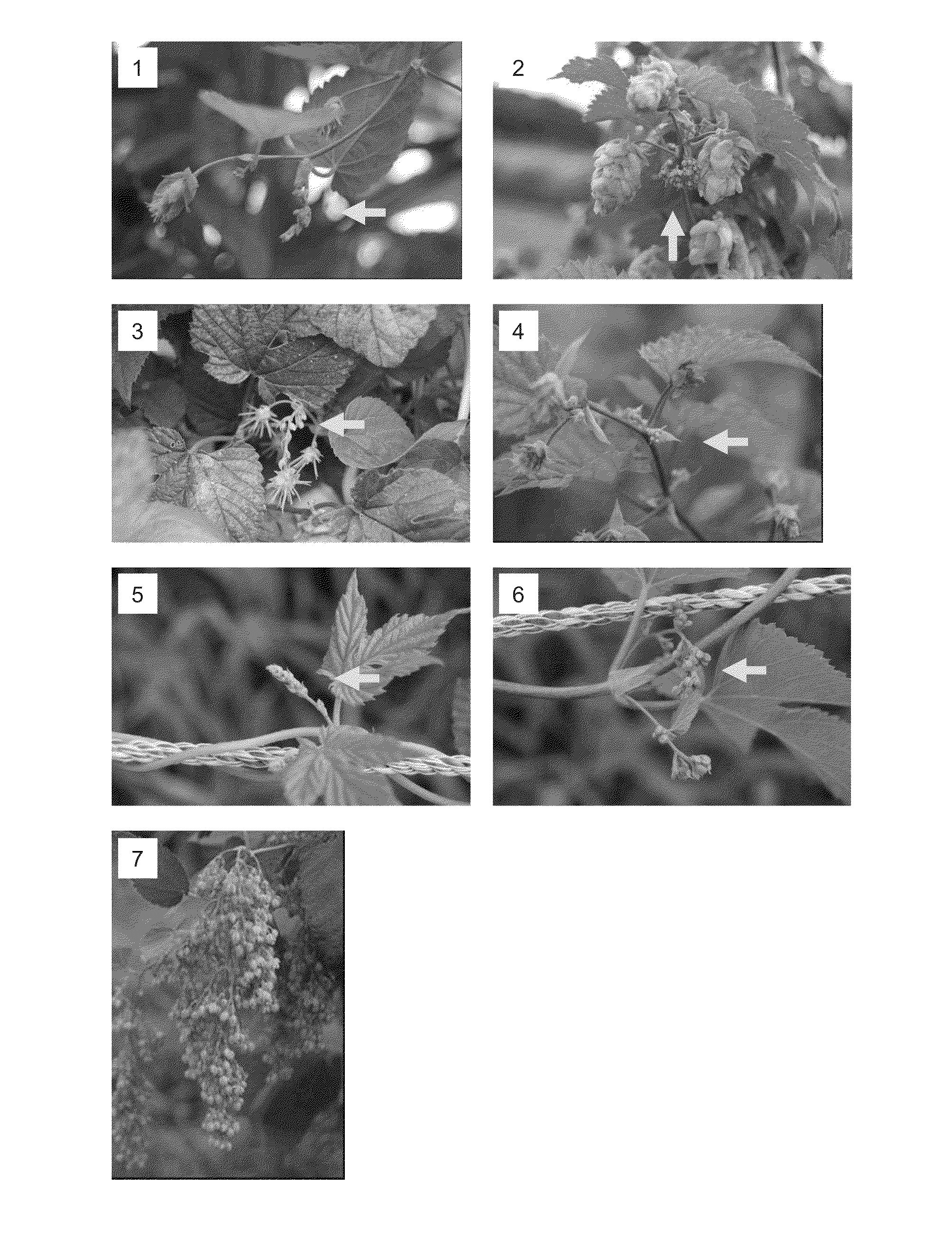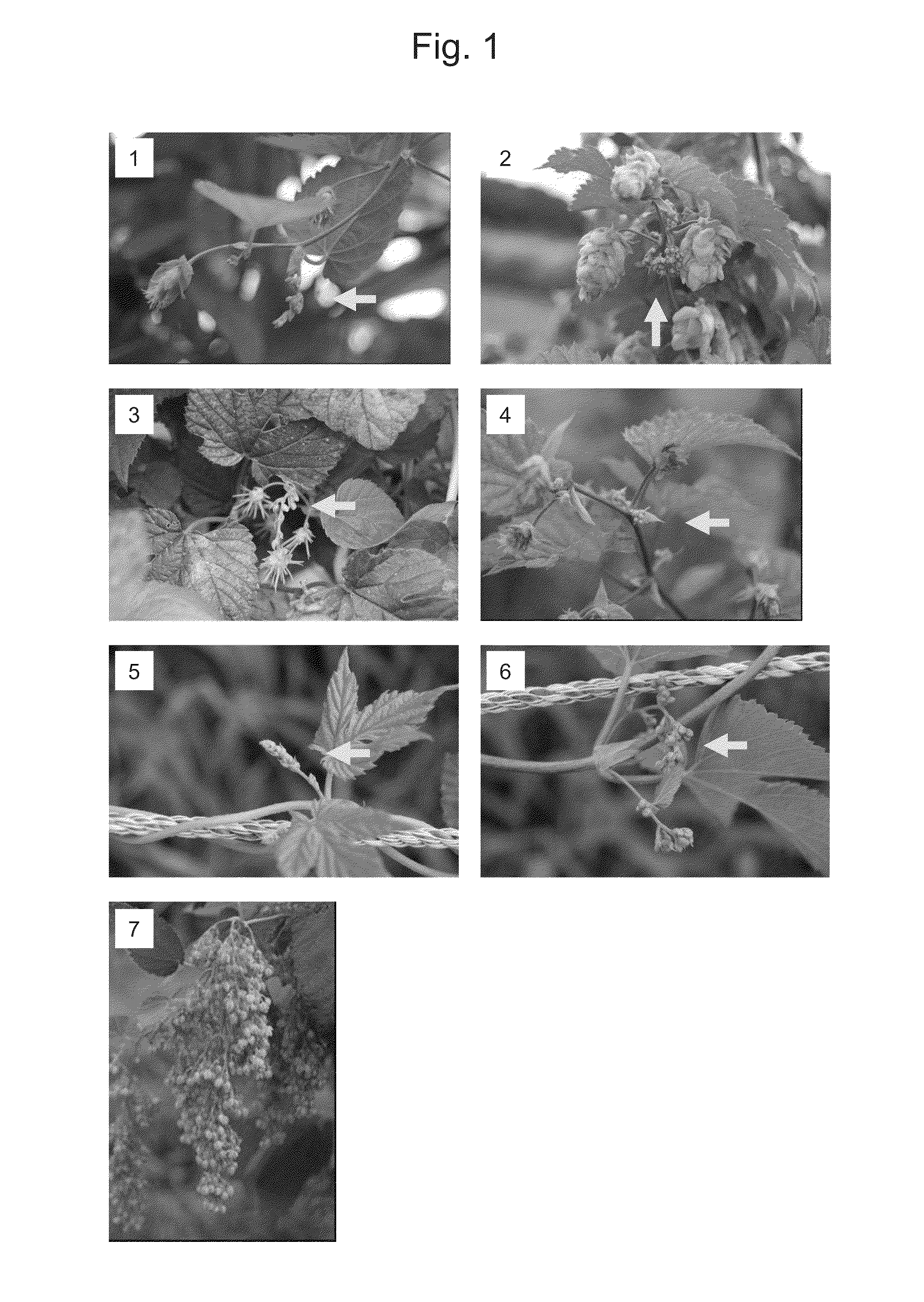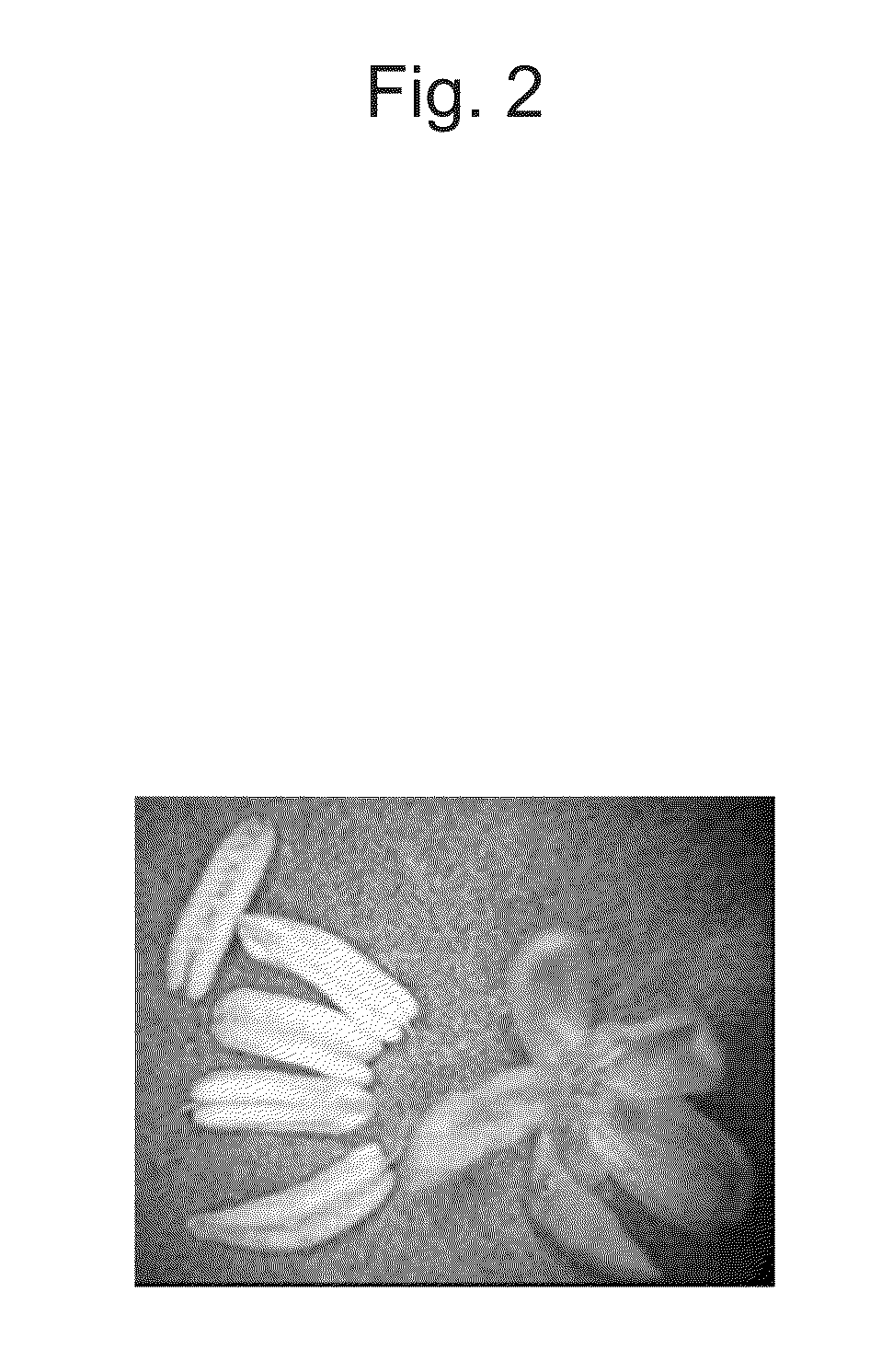Method for controlling sexuality of hop
a technology for controlling sexuality and hops, applied in the field of controlling hop sexuality, can solve the problems of insufficient maintenance and evaluation of male plants for breeding, inability to establish a technology in which a male flower is induced from a female plant to make it possible to crossbreed between female plants, and insufficient economic benefits such as time and cost, so as to improve the breeding efficiency and quality of the cone, and the plant breeding program becomes simpler. , the effect of improving the breeding efficiency
- Summary
- Abstract
- Description
- Claims
- Application Information
AI Technical Summary
Benefits of technology
Problems solved by technology
Method used
Image
Examples
example 1
Forming a Male Flower on a Female Plant Bred at a Farm Site (Part 1)
[0080]Hop varieties (female plants) “Kirin No. 2”, “Kaikogane” (Japan variety registration No. 20), “Kitamidori” (Japan variety registration No. 1978), “Toyomidori” (Japan variety registration No. 160), “HALLERTAUER MITTELFUH” and “HERSBRUCKER”, each of which is an over-wintering plant or strain, were planted at a farm site located in Sakura city, Tochigi (Japan), on March 18 or 19, 2010 and cultivated in accordance with a routine method. Upon cultivation, ropes were horizontally stretched, instead of installing racks, at a height of about 1 m 50 cm above the ground to use as supports for the vines. The primary lateral branch, when elongated was cut leaving 3 nodes intact to promote the development of the secondary lateral branch. The above hop varieties are available from public institutions and cooperatives associated with the above varieties, such as National Clonal Germplasm Repository—Corvallis (NCGR-Corvallis,...
example 2
[0084]Forming a Male Flower on a Female Plant bred in a Greenhouse (Part 1)
[0085]An over-wintering plant or strain of the hop variety “Kirin No. 2” was planted in pots charged with Best culture soil (Honen Agri, Japan) having an inner diameter of about 25 cm. Magamp-K (Hyponex Japan, Japan) was added in an appropriate amount to the culture soil as base manure, and Magamp-K was additionally applied thereafter in an appropriate amount about once in 2 months. Ropes were suspended down from the beam of a greenhouse and used as supports for the vines. The greenhouse had the lowest temperature of 15° C. Agricultural chemicals were sprayed as necessary for pest control.
[0086]CHRYSAL K-20C (Chrysal Japan Limited, Osaka, Japan), a commercial silver thiosulfate (STS) solution, was diluted with distilled water so as to give silver ion concentrations of 0.1 mM, 0.2 mM, 0.4 mM, 2 mM and 20 mM. These solutions were applied to the surface of all the leaves, which were not withered, using a paint b...
example 3
Forming a Male Flower on a Female Plant Bred in a Greenhouse (Part 2)
[0088]An over-wintering plant of the hop variety “Toyomidori” was used and bred in the same manner as in Example 2.
[0089]CHRYSAL K-20C (Chrysal Japan Limited, Osaka, Japan), a commercial silver thiosulfate (STS) solution, was diluted with distilled water so as to give a silver ion concentration of 2 mM. The solution was applied to the surface of all the leaves, which were not withered, using a paint brush twice every 2 weeks from the time at which the plant grew to 12-15 nodes. Also, distilled water was applied as a control area. Thereafter, the main stem was cut at about the 17th node to avoid that the plant reached the ceiling of the greenhouse. The primary lateral branch, when further elongated, was cut leaving 3 nodes intact to promote the development of the secondary lateral branch. In the 2 mM area, the applied leaves were partially browned but the remaining part continued growing.
[0090]Only female flowers we...
PUM
| Property | Measurement | Unit |
|---|---|---|
| inner diameter | aaaaa | aaaaa |
| temperature | aaaaa | aaaaa |
| inner diameter | aaaaa | aaaaa |
Abstract
Description
Claims
Application Information
 Login to View More
Login to View More - R&D
- Intellectual Property
- Life Sciences
- Materials
- Tech Scout
- Unparalleled Data Quality
- Higher Quality Content
- 60% Fewer Hallucinations
Browse by: Latest US Patents, China's latest patents, Technical Efficacy Thesaurus, Application Domain, Technology Topic, Popular Technical Reports.
© 2025 PatSnap. All rights reserved.Legal|Privacy policy|Modern Slavery Act Transparency Statement|Sitemap|About US| Contact US: help@patsnap.com



